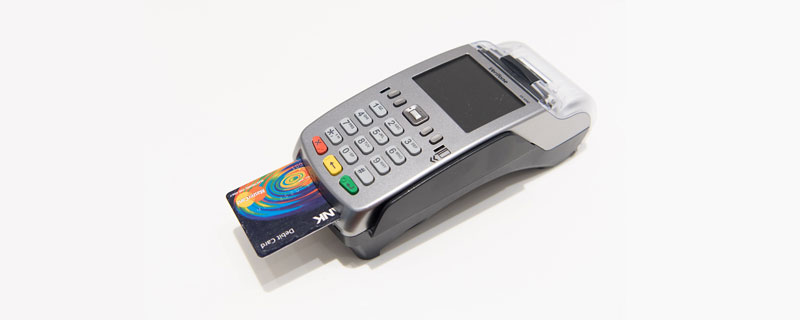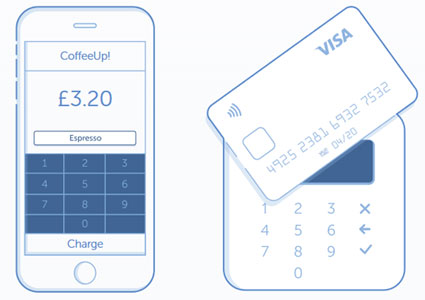Understanding Chip and PIN Machines

Now a commonplace piece of technology, the Chip and PIN machines have become a regular part of daily life. While checks and credit cards have always provided a way to avoid carrying cash, the struggle of fraud always lingered in the background.
By converting to chip cards, safe payment has been redefined in a way that benefits the consumer. Safety has become first priority, thus explaining the rapid transition to new and modern card readers. The low cost of chip technology has allowed it to be a fair and simple system of access to all forms of business.
While the chip technology began in France, it gained international attention due to France’s 80% reduction in fraud. Now, Chip and PIN technology is widely used in UK at most retailers and larger stores.
Chip and PIN machine – how it works?
 A Chip and PIN machine utilizes the codes within a chip located on a credit card, while also requiring a PIN (Personal Identification Number) in order for there to be a unique code only known by the cardholder.
A Chip and PIN machine utilizes the codes within a chip located on a credit card, while also requiring a PIN (Personal Identification Number) in order for there to be a unique code only known by the cardholder.
What is EMV?
The chip itself is referred to as an EMV – a name that incorporates Europay, MasterCard, and Visa. The technology is taking the world by storm, causing a drastic change for both consumer and business. This alteration in technology is causing a need for haste in the business world, in order to keep up.
Beyond simply improving fraud protection, EMV technology also comes with extensive rights. When the chip is used and a transaction is fraudulent, there is no question of the cardholder’s validity.
As f 2009, the Financial Services Authority (now: Financial Conduct Authority) has made it an obligation for banks and card companies to prove that transactions are legitimate. There is no longer a necessity to prove innocence – as it is already proven.
Consumers can feel peace of mind with the Chip and PIN machine. Knowing purchases are secure and personal information, available credit, and account balances are impenetrable by thieves. Customers can feel safe making purchases from smaller stores, as the fear of credit card fraud is essentially alleviated.
Now, the chip standards are watched over by an organization known as EMVCo.

Why were chip and pin cards introduced?
 This card technology came into existence in order to reduce issues with fraud. Let’s face few facts:
This card technology came into existence in order to reduce issues with fraud. Let’s face few facts:
- Swipe cards are susceptible
- Signatures can easily be forged, and
- Magnetic strip cards can be easily duplicated with fairly inexpensive equipment
The chip houses information about the card in a secure manner. Once the card is inserted into a Chip and PIN card reader, the machine will know the card number, expiration date, and more.
The cardholder enters their PIN into the machine, as that information is not available on the chip.
Vendors will never have access to the PIN number. Because of this, those without the PIN number are unable to utilize the card.
Mobile Chip and PIN Machine
All across the globe, cash transactions are becoming fewer and fewer. In order to run a successful business, you need to accept credit card payments.
Mobile chip and PIN machines allow any business to accept credit and debit card payments on the go – an important feature in a nearly cashless world. They much easier and cheaper solution especially for smaller companies with less financial leeway.
The mobile card acceptance technology works with a free app that allows businesses to use smartphones and tablets to accept card transactions. The process of signup is simple, and the cost is relatively low.

Who can benefit from mobile chip and PIN payments?
With mobile chip and PIN machines, small and medium businesses are able to obtain the safest cashless payment option on the market. There no longer needs to be the limitation of being a cash-only business.
Mobile point of sale (POS) options are inexpensive enough for all business types.
The cash register no longer needs to be a single location. The technology for payment is available in any location, at any time. Even art vendors can benefit from this, as now it is simple to sell a work of art at any location nationwide. No one needs to be carrying cash in order to purchase the work, as was necessary in the past.
Trade industries tend to struggle with credit card options. Now, even those performing manual labor tasks are able to provide an option for cashless payment.
With just a cell phone in pocket, a landscaper, carpenter, plumber, or anyone in between, can accept major credit or debit cards.
If the company only consists of a few workers, or even a single person, it can take part in providing a safe and consumer-friendly option for payment.
Last updated: 05/10/2017
